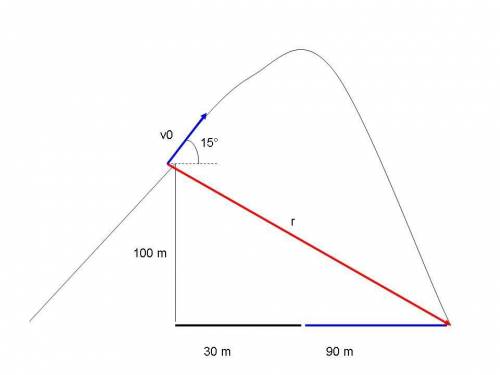
The end of an action movie car chase involves the villain driving off a vertical cliff and falling into the ocean below you have been asked to work out the details of this stunt. the diff is 100m above the water, and the water begins 30m away from the base of the cliff. the car is supposed to land at least 90m into the water. the edge of the cliff has a slight upward slope, 15 degrees above horizontal. draw a motion diagram and a force diagram for the car while it is airborne estimate how fast the car should be going when it leaves the end of the cliff. do you expect this to be an underestimate or an overestimate? explain your reasoning a. b.

Answers: 2
Other questions on the subject: Physics

Physics, 21.06.2019 22:30, tladitidimatso1783
A2 kg ball travellng to the right with a speed of 4 m/s collidees with a 5 kg ball traveling to the left with a speed of 3 m/s. take right to be the positive direction. what is the total momentum of the two balls before they collide? what is the total momentum of the two balls after they collide?
Answers: 1

Physics, 21.06.2019 23:00, desiwill01
We want to calculate the total metabolic heat generated by a singing canary taking into account heat transfer by radiation, convection and exhaling air. the air temperature is 20 oc, canary’s body internal and surface temperature is 33oc, external body surface convective heat transfer coefficient is 25.2 w/m2 .k, temperature difference between the inhaled and exhaled air is 4.3 oc, the ventilation rate is 0.74 cc of air per second, specific heat of air is 1.0066 kj/kg. k and density of air is 1.16 kg/m3 . assume the canary’s body to be a cylinder with 7 cm diameter and 9 cm length, and heat exchange is from the side as well as the top and bottom of cylinder. calculate 1) the net rate of heat lost by radiation, assuming heat gained by the bird through radiation from the surroundings is 11.5 w; 2) rate of heat transferred by convection to the surrounding air; 3) rate of heat transferred in the exhaling air without considering any internal evaporation; 4) total metabolic power.
Answers: 2

Physics, 22.06.2019 04:00, johnandashley5p65r4a
Assume similar data for the motion of the blood in your aorta. estimate how many beats of the heart it will take the blood to get from your heart to your brain. (assume that the distance from your heart to your brain is 30 cm)
Answers: 2

Physics, 22.06.2019 11:50, kaylallangari2145
Amoving electron has kinetic energy k1. after a net amount of work w has been done on it, the electron is moving one-quarter as fast in the opposite direction. (a) find w in terms of k1. (b) does your answer depend on the final direction of the electron's motion?
Answers: 2
Do you know the correct answer?
The end of an action movie car chase involves the villain driving off a vertical cliff and falling i...
Questions in other subjects:




Mathematics, 04.08.2019 22:30






English, 04.08.2019 22:30







